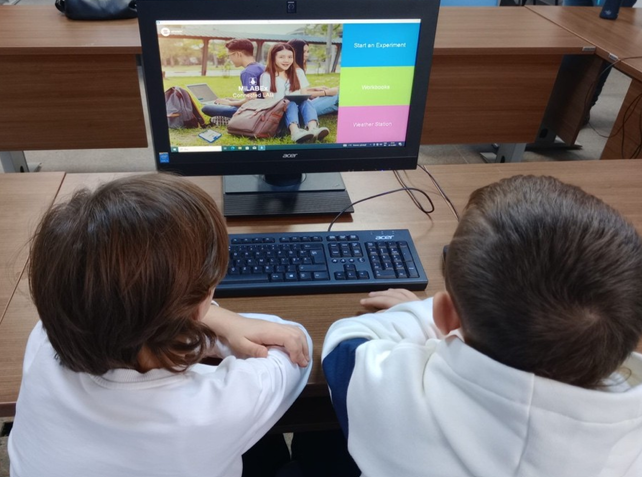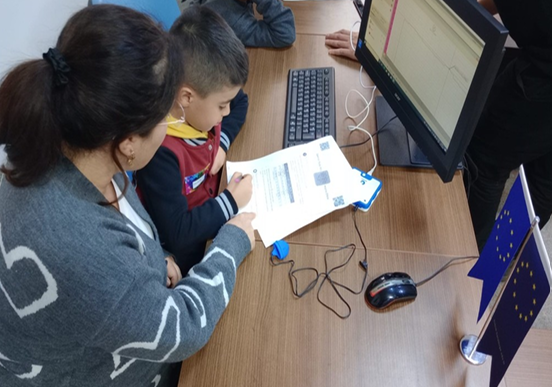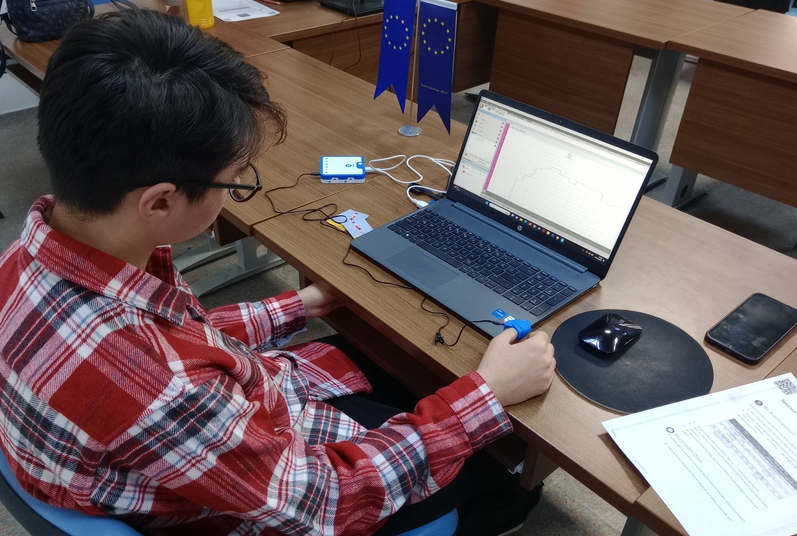BASIC INFORMATION
- Participant: Primary school students
- Duration: 60 minutes
- Partners involved: Higher education representative (HU), STEM Center of Kafkas University
Description of the activity
This activity is an inquiry-based research activity in which the effect of sports on heart rate is investigated. Participants carry out a research process to answer the research question given to them and share the data and results of this research process with other participants. The aim of the research is to answer the effect of variables such as age, regular sports practice (physical fitness) and rest time on heart rate through their studies. This activity can be used especially at primary and lower secondary school level and will guide participants of all age groups in society to make inferences based on data. Although the activity has a biology-based structure, it also includes digitalization in the process through the sensors and software used in it. In particular, the visualization of the data obtained, the ability to read and interpret graphics are also employed in the activity process. At the same time, the fact that there are participants of different age groups in the activity process includes high-level skills such as making comparisons and making predictions for new situations using existing information.

Description of the implementation
The activity was conducted in a STEM laboratory. The activity includes a sensor that measures heart rate from the finger and a data logger that transfers this measurement to the computer. Therefore, the STEM laboratory was used as a suitable environment. The duration of the acticity was approximately 60 minutes.
The participants included children, their families, STEM Center staff and the workshop leader. The workshop was led by the workshop leader and the families and children worked as a group. STEM Center staff provided support in the use of data collection tools and data loggers.
The knowledge, skills, and attituges developed by the learners
During this activity, participants acquire scientific knowledge about the effect of being healthy on heart rate. At the same time, they gain problem solving skills by using appropriate measurement tools. Because during the activity, the participants make measurements with a heart rate sensor and visualize these measurements through computer software.
Key Success Factors of the LHA
The main achievement of this activity was that the young participants were involved in scientific research processes and collected data for the first time through sensors. At the same time, for adults, it is the ability to provide scientific data-based explanations for research questions that they already know or think they know the answer to. In this way, it will contribute to the development of individuals in society as science literate.


Picture: Hacettepe University team
OUTCOMES
It is interesting because it involves the application of real-life problems. Although it has a simple content, it includes all the steps of the inquiry-based learning process. The activity in its implementation promotes collaborative work between participants.
This was a successful activity in which the benefits of being healthy and the benefits of being healthy in terms of heart health were learned using scientific data. When children see their parents jumping rope or jumping on one leg, it is an activity that entertains them and generally pleases the participants.
